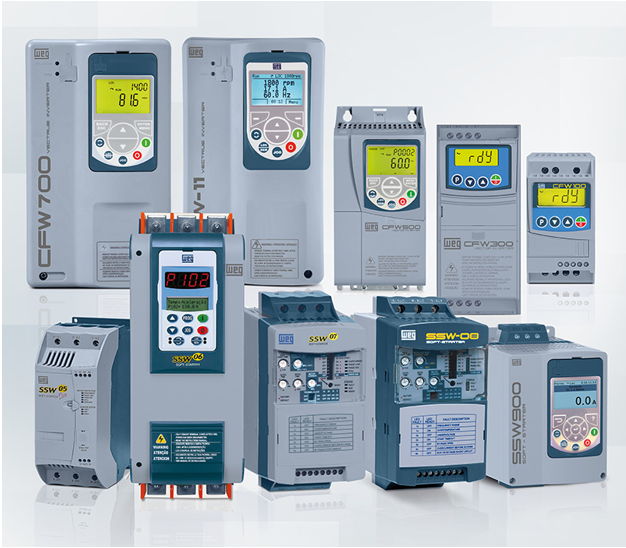 Before the introduction of variable frequency drives (VFDs) in the early 1980’s, the only option for controlling fan motor speed was to build a motor with two different speeds. The problem with two speed motors is that they were expense and had very long manufacturing lead times. VFDs with current technology can cost effectively control motor speed to almost an infinite number of options. If you have ever had questions about controlling fan motor speed with a VFD, I will answer some of your questions about how it works and the pros and cons of using a VFD.
Before the introduction of variable frequency drives (VFDs) in the early 1980’s, the only option for controlling fan motor speed was to build a motor with two different speeds. The problem with two speed motors is that they were expense and had very long manufacturing lead times. VFDs with current technology can cost effectively control motor speed to almost an infinite number of options. If you have ever had questions about controlling fan motor speed with a VFD, I will answer some of your questions about how it works and the pros and cons of using a VFD.
Synchronous Speed of a Motor
To know how a VFD works, we have to first start with understanding the synchronous speed of a motor which is determined by the power supply frequency and the number poles in a motor winding. The formula for synchronous speed is:
In the US, the standard frequency of 3 phase power is 60 Hz (Hz is the abbreviation for Hertz which is the number of cycles per second). The number of poles in a motor winding are always an even number.
Based on the synchronous speed formula, the table below shows the synchronous speeds of standard US motors:
How a VFD Works
A VFD works by changing the power supply frequency. The technical explanation is that a VFD first converts the input AC power to DC using a rectifier. The latest VFD technology then uses power transistors and Pulse Width Modulation to convert the DC power back to AC power at a different frequency.
Using the synchronous speed formula, the table below shows the synchronous motor speeds that will result from a VFD changing the power supply frequency:
The table above shows the resulting synchronous speeds for only a few frequency settings. A VFD is capable of providing frequency setting between 0% and 100% of the motor speed allowing for a wide range of synchronous speeds.
While it is theoretically possible to overspeed a fan motor to produce more airflow using a VFD, there are two practical limitations to the maximum speed. The first issue is blade tip speed. Consult the fan manufacturer’s guidelines for allowable maximum blade tip speed. A fan propeller turning too fast will subject the blades to excess stress which can lead to blade failure. The second issue is vibration. Higher motor speeds will accentuate any imbalance in the motor shaft and fan propeller which may lead to fan failure. It is best to consult the motor manufacturer’s guidelines before over speeding a motor.
Benefits of a VFD
Here are some of the benefits of using a VFD to control fan motor speed:
Air Flow Control – Fan air flow can be reduced by using a VFD. A good example is an HVLS fan. When temperatures inside a facility rise, increasing the fan speed will provide a higher cooling effect.
Energy Savings – If the air flow required from the fan is variable, then having the ability to reduce the fan speed reduces power consumption which results in energy savings. A VFD also reduces the power consumption when the motor is started.
No Motor Starter – When using a VFD, no motor starter is required. This can offset some of the cost of a VFD.
Extended Motor Life – Reduced power consumption and smoother start-ups may also extend motor life.
Motor Availability – Sometimes motors with lower synchronous speeds, such as 870 and 720 rpms, have long lead times for manufacturing. On the other hand, 1800 rpm motors are often stock items that are available on demand. Using a VFD to control an 1800 rpm motor to the required speed is a cost-effective alternative to long motor manufacturing lead times.
Disadvantages of a VFD
Here are some of the disadvantages of using a VFD to control motor speed:
VFD Compatible – Only synchronous motors with brushless ac, brushed, or permanent magnet excitation are VFD compatible. While most new motors will be VFD compatible, it is most important to know the motor type when retrofitting an older fan motor with a VFD.
Mechanical Resonance – A fan’s natural frequency of vibration may match the power supply frequency. When this occurs, the fan will produce significant vibrations which may ultimately lead to fan failure. Mechanical resonance is most likely to occur at lower frequencies. Configure the VFD to prevent the motor from turning at these frequencies.
Lower Motor Service Factor – Controlling motors with a VFD will reduce the service factor. Consult the motor manufacturer for service factor limitations when using a VFD.
Harmonics – The different power supply frequencies produced by a VFD may create harmonics that can damage sensitive electrical equipment. To eliminate harmonics, a line will be required.
Redundant Control – VFDs can be used to control each fan in a multi-fan ventilation system. However, it may be more cost effective to turn individual fans on and off to control the air flow.
Conclusion
There are a number of applications where a VFD can optimize the efficiency and effectiveness of an individual fan or an entire ventilation system. If you need help determining if your application is right for controlling fan motor speed with a VFD, contact an Eldridge ventilation expert. We can help you make the right investment to create a successful environment in your facility.
